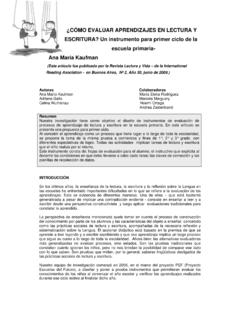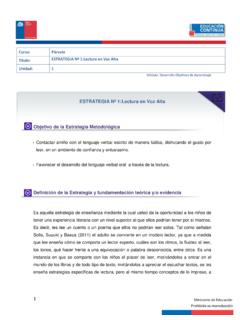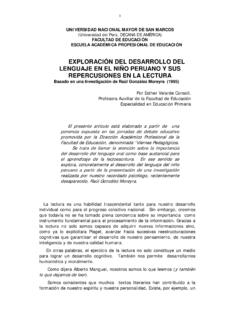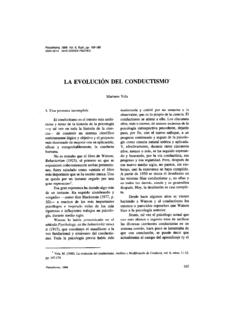Transcription of Lower incisor extraction: An orthodontic treatment …
1 Sp e c i a l ar t i c l eDental Press J Orthod1432010 Nov-Dec;15(6):143-61 Lower incisor extraction : an orthodontic treatment optionM rian Aiko Nakane Matsumoto*, F bio Louren o Romano**, Jos Tarc sio Lima Ferreira**, Silvia Tanaka**, Elizabeth Norie Morizono** Lower incisor extraction can be regarded as a valuable option in the pursuit of excellence in orthodontic results in terms of function, aesthetics and stability. The aim of this study was to gather information about the indications, contraindications, advantages, disadvan-tages and stability of the results achieved in treatments performed with Lower incisor ex-traction.
2 This treatment option may be indicated in malocclusions with anterior tooth size discrepancy due to narrow maxillary incisors and/or large mandibular incisors. It is con-traindicated in malocclusions without anterior discrepancy or with discrepancies caused by large maxillary incisors and/or narrow mandibular incisors. The literature suggests this method affords improved posttreatment stability compared with premolar extraction . As well as a careful diagnosis, established with the aid of a diagnostic setup, professional skills and clinical experience are instrumental in achieving successful orthodontic results with this treatment : Orthodontics.
3 Corrective Orthodontics. Tooth extraction . * Associate Professor, Department of Pediatric Dentistry, Preventive and Social Dentistry, Ribeir o Preto School of Dentistry, S o Paulo University. PhD. in Ortho-dontics, School of Dentistry, Rio de Janeiro Federal University (UFRJ). Diplomate of the Brazilian Board of Orthodontics. ** DDS, Department of Pediatric Dentistry, Preventive and Social Dentistry, Ribeir o Preto School of Dentistry, S o Paulo University. in Orthodontics, Piraci-caba School of Dentistry, Campinas State University. ** DDS, Department of Pediatric Dentistry, Preventive and Social Dentistry, Ribeir o Preto School of Dentistry, S o Paulo University.
4 , School of Engineering, Rio de Janeiro Federal University. ** Specialist in Orthodontics, Dental School of Ribeir o Preto, S o Paulo University. ** in Orthodontics, School of Dentistry, Rio de Janeiro Federal University (UFRJ).IntroductIonThe development of orthodontics through scientific research and clinical observations has brought with it the realization that in order to achieve a normal occlusion tooth extraction is of-ten required, be the extracted teeth premolars as is predominantly the case or other for orthodontic purposes were made as early as the eighteenth century by Hunter, whose reports were published in his book: The Natural History of Human Teeth.
5 Edward Hart-ley Angle condemned this practice in the belief that ..better balance, more harmony and the best possible proportions of the mouth in its multiple Lower incisor extraction : an orthodontic treatment optionDental Press J Orthod1442010 Nov-Dec;15(6):143-61relationships require the presence of all teeth and each tooth should occupy a normal position. 3 This assertion was disputed by Calvin Case, who argued that the basal bones could not be induced by mechanical means to grow beyond its inherent size. Therefore, without extrac-tions it would not be possible to resolve severe skeletal-dental discrepancies, and it would not justify compromising normal occlusion and pro-ducing severe protrusion by keeping all teeth in the Case warned, though, that patients should not be treated according to a single model since malocclusions can have either hereditary and environmental origins, or even a combina-tion of the Therefore, extraction of perma-nent teeth should be considered in the treatment of certain Eventually.
6 Tooth re-moval became common practice in orthodontic treatment and the first premolars were almost always selected due to their proximity to the in-cisors, which enabled correction and retraction of these , on the one hand, extractions facilitated orth-odontic mechanics, on the other, they brought to light a range of treatment options, and in order for better planning to be established and practiced it is crucial that diagnosis be thorough and well ex-ecuted. Besides periapical, panoramic and occlusal X-rays, cephalograms, photographs and models, it is essential to produce a diagnostic Prior to choosing the most favorable treatment option it is important to analyze treatment goals, stability, the final occlusion to be achieved and the esthetic conditions that constitute a case.
7 In view of this fact, Lower incisor extraction becomes an al-ternative treatment for malocclusions that do not fit the conventional forms of extraction since they are more stable in the long aim of this study was to compile avail-able information in the literature, emphasizing indications, contraindications, advantages and dis-advantages, stability of results, limitations, clinical considerations and case reports on the extraction of mandibular incisors as an additional option in the correction of Angle Class I malocclusion with severe ante-rior tooth size discrepancy (greater than mm) due to agenesis of incisors or a deficient mesiodistal diameter of the upper incisors (narrow)
8 Or, con-versely, excessive mesiodistal diameter of the man-dibular ,10,17,20,28 Dental Class I malocclusions with normal maxillary dentition, adequate posterior intercus-pation and Lower anterior crowding with lack of space for approximately one mandibular ,24,28 Dental Class I malocclusions with anterior crossbite due to crowding and protrusion of the Lower incisors; adequate posterior intercuspation, acceptable facial esthetics and absence of skele-tal-dental discrepancy in the upper Cleft lip and palate cases where, after man-dibular surgery, it was not possible to establish proper overbite and overjet, rendering necessary the extraction of a mandibular incisor to foster stable surgical Cases in which one wishes to avoid in-creasing intercanine width in certain ,12,20,27 Malocclusions that tend towards a Class III ,9 As a non-surgical alternative in Class III.
9 8 As a compromise solution in adult treatment or in relapse Adult patients with mild to moderate Class III malocclusion with relatively small crowding and incisors with a non-triangular Moderate Class III malocclusions with an-terior crossbite, or incisors with edge-to-edge re-lationship, showing a tendency towards anterior open Class II Division 1 skeletal and dental maloc-clusions with maxillary protrusion and crowding Matsumoto MAN, Romano FL, Ferreira JTL, Tanaka S, Morizono ENDental Press J Orthod1452010 Nov-Dec;15(6):143-61or protrusion of the Lower incisors.
10 Typically, Lower incisor extraction should be associated with the extraction of maxillary premolars while keeping the Class II molar relationship but establishing normal canine ,12,13,18,29 Malocclusions with a malformed or peri-odontally compromised mandibular incisor , whose maintenance would not provide any benefit what-soever in view of the stability of the dentition as a ,7,21,28It is noteworthy that the main indication to extract a Lower incisor is the presence of tooth size discrepancy equal to or greater than mm due to Lower anterior excess or upper anterior ,15,21,28contrAIndIcAtIonS All cases requiring extractions in both arches with severe overbite and horizontal growth pattern, bimaxillary crowding, no tooth size discrepancy in the anterior teeth, anterior tooth size discrepancy due to narrow mandibu-lar incisors and/or broad maxillary incisors, pro-nounced.
















